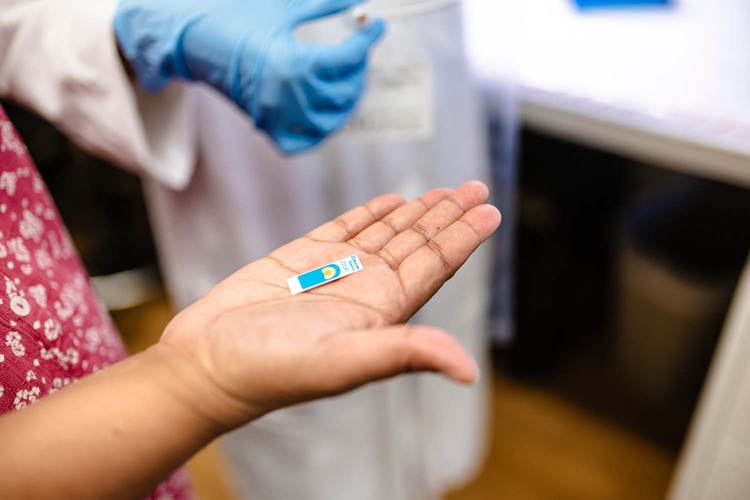Gravity-Powered Biomedical Device Paves Way for Low Cost POC Diagnostic Testing
Posted on 14 Jul 2023
The need for simple, user-friendly, point-of-care devices continues to exist. Many prototype and market-ready devices aim to simplify diagnosis and crucial biomarker measurement processes using minimal liquid samples, power, and professional knowledge. These innovations aim to enhance healthcare delivery for the vast population residing in low-resource locales, far from well-equipped hospitals and qualified medical personnel. These tests generally share certain prerequisites: they need to transport, combine, and assess minute biological sample-containing droplets and their active ingredients, enabling specific biomarker measurements. High-end devices employ miniature electric pumps to facilitate these reactions, while others leverage the dynamics of liquids within microchannels, or microfluidics, to produce a suction-like effect. Each method comes with its own distinct benefits and challenges. Now, researchers have demonstrated a first-of-its-kind approach that only uses gravity to power point-of-care biomedical devices and also offers certain advantages over currently existing platforms.
Biomedical engineers at Duke University (Durham, NC, USA) have devised a completely new approach for building point-of-care diagnostic tools, which only leverages gravity to transport, mix, and manipulate the liquid droplets involved. This proof-of-concept uses readily available materials and minimal power to interpret results, making it a potentially beneficial option for use in settings with limited resources. The innovative gravity-based technique is based on a selection of nine commercially available surface coatings that can fine-tune the wettability and slipperiness at any given point in the device, thereby controlling how much droplets spread into pancakes or remain spherical, while also influencing their ease of movement down an incline.

By using these surface coatings in smart combinations, all necessary microfluidic elements required for a point-of-care test can be generated. For instance, if a certain location is extremely slippery and a droplet is positioned at a juncture where one side pulls liquid flat and the other pushes it into a ball, it acts like a pump and accelerates the droplet toward the former. The scientists devised numerous elements to manage the motion, interaction, timing, and sequence of multiple droplets within the device. Merging these elements, they fabricated a prototype test to measure human serum lactate dehydrogenase (LDH) levels. They carved channels into the testing platform to create designated routes for droplet passage, each coated with a substance preventing droplets from sticking along the way. Specific points were also pre-treated with dried reagents needed for the test, which are absorbed by droplets of simple buffer solution as they traverse the channels.
The maze-like test is then sealed with a lid equipped with holes for the sample and buffer solution to be dripped in. Once filled, the test is inserted into a box-shaped device with a handle that rotates the test by 90 degrees, allowing gravity to take over. The device also features a simple LED and light detector for swift and easy color-based test result assessment. This enables the scientists to label three different biomarkers with distinct colors for varying tests. In the LDH prototype test, the biomarker is marked with a blue molecule. A basic microcontroller measures the depth of the blue tint and the rate of color change, signifying the quantity and concentration of LDH in the sample, to yield results. This novel demonstration presents a new approach to the development of affordable, low-energy, point-of-care diagnostic devices. While the team intends to further refine their concept, they also hope it will spark interest and lead to the creation of similar tests by other researchers.
“Most microfluidic devices need more than just capillary forces to operate,” said Ashutosh Chilkoti, the Alan L. Kaganov Distinguished Professor of Biomedical Engineering at Duke. “This approach is much simpler and also allows very complex fluid paths to be designed and operated, which is not easy or cheap to do with microfluidics.”
Related Links:
Duke University










 (3) (1).png)



